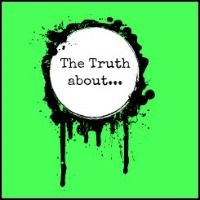
I don’t know about you, but when I was at school, I wasn’t taught phonics. This approach to teaching children to spell and read was introduced long after I had left school. Now my oldest child is in education, this is causing some minor issues.
I totally get phonics. I think they’re brilliant. The frightening speed at which Helen, my six year old, picked up the ability to read, and subsequently spell, is testament to their power as an educational tool.
Although we are working up to a “but”. Homework, you see, often goes like this;
Me; “Okay Helen, can you please spell the word father?”
Helen; “fff, a th, ur.”
“Err, yeah, but how do you spell it”
“But I have spelled it.”
“Okay, what I mean is, how do you spell th and ur.”
“Daddy, you know; t-huh and e-ruuh.”
“Great, let’s move on. How do you spell squad?”
“S, qw, odd.”
“Er, yeah, but how do you spell it?”
“But I have spelled it.”
“Okay, what I mean is…”
This can go on until all spellings are completed. I totally understand it’s my issue and not hers. When Helen is spelling these words I sometimes struggle to figure out what she’s saying. She’s spelling correctly phonetically, but I’m several steps behind.
Firstly I have to go through the spellings in my head in the phonetic alphabet; alpha, bravo, Charlie, delta etc. I then have to convert it into the old fashioned A, Be, Ce, De, Ee, F, Ge to make sense.
Then, of course, she also spells out her digraphs phonetically and I get myself all tangled up in knots. I am genuinely outdone by a six year old who can spell phonetically much, much quicker than I can. It’s a bit embarrassing, truth be told (Don’t know what a digraph is? Neither did I, but you can read all about them here).
Before you go thinking I’m stupid, I am on my home turf using the traditional alphabet. Helen can’t outdo me if we’re using A, Be, Ce, De etc. Needless to say, she isn’t taught that way at school and so I try to avoid it at home as much as possible.
Helen’s school clearly recognised phonics were uncharted territory for some mums and dads. For the first couple of years, us parents were invited in for evening sessions at which the curriculum and phonics were explained.
I completely understood what the teachers told us and put much of it into practice. A lifetime of using an outdated spelling system, however, has left its mark on me and I’m not as good at phonics as I’d like.
Of course this is just one aspect of homework. Numeracy is a completely different game altogether. Number bonds, dienes, and number sentences; all concepts I knew nothing about until my daughter introduced me to them!
Photo credit; Speedpropertybuyers.co.uk Sourced from Flikr.com and reproduced under Creative Commons agreement.









5 thoughts on “I love you phonics, but you do my head in”
Aaaaaagggggghhhh phonics. I’ve been wanting to write a blog post about this but haven’t yet got the knowledge. The problem? E is really into her letters at the moment and can recognise them to read out loud. She’s not up to spelling yet, in terms of making the letters make sense for reading, (she’s only 3) but it won’t be long before this develops. The problem is, I know phonics are what they do at school and I have no idea how to teach her those. I’ve been making the noises of letters as we read them but she recognises letters as A, b, c, d and not just the sounds. My sister has already yelled at me for teaching her letters and not phonics because she thinks E will get confused at school. Anything you can recommend that I can use with her at home?
Welcome to my world. Well, first thing, E will still be taught letters by name (IE the traditional alphabet). It is still in use so you’re not doing anything wrong. In fact Helen can often see me struggling with phonics so switches to using letters for my benefit! In other words, have no fear about teaching E letters as she needs to learn them, although they are not relied on as heavily.
I can’t really think of any special resources to use as there are loads out there. Make sure you attend any curriculum evenings as the way kids are taught, especially in reception, are so creative. E will probably return home pretending there are ants running up her arm (a for ant), or pretending to be an aeroplane (nnnnn for a jet engine), or swining her head from side to side (t for tennis). In other words; teach both alphabets read up on digraphs and use them and go to the curriculum evenings.
My sister is a teaching assistant and is going to give me some phonics workbooks by Julia Donaldson (The Gruffalo) for my three year old to have a look at before school next year. No idea how successful this will be mind you!
Is Helen in Year 2? We haven’t come across dienes yet (and neither has my Kindle apparently!) But I do love a digraph (that was a new one on me too though!) JJ is just about to embark upon learning all about the “magic” e – I do think some of these ways of teaching seem ingenious but spelling is another matter altogether 🙂 Thanks for linking up this week John #thetruthabout
Try doing one year of it in the UK and then moving to the US where they use a slightly different system! Throw in an accent and you’re completely stuck 🙂 And don’t get me started on the ‘new’ maths, it confuses the hell out of me… and then I confuse my eldest by getting the same answer as him a totally different way! And, I’m an engineer 🙂